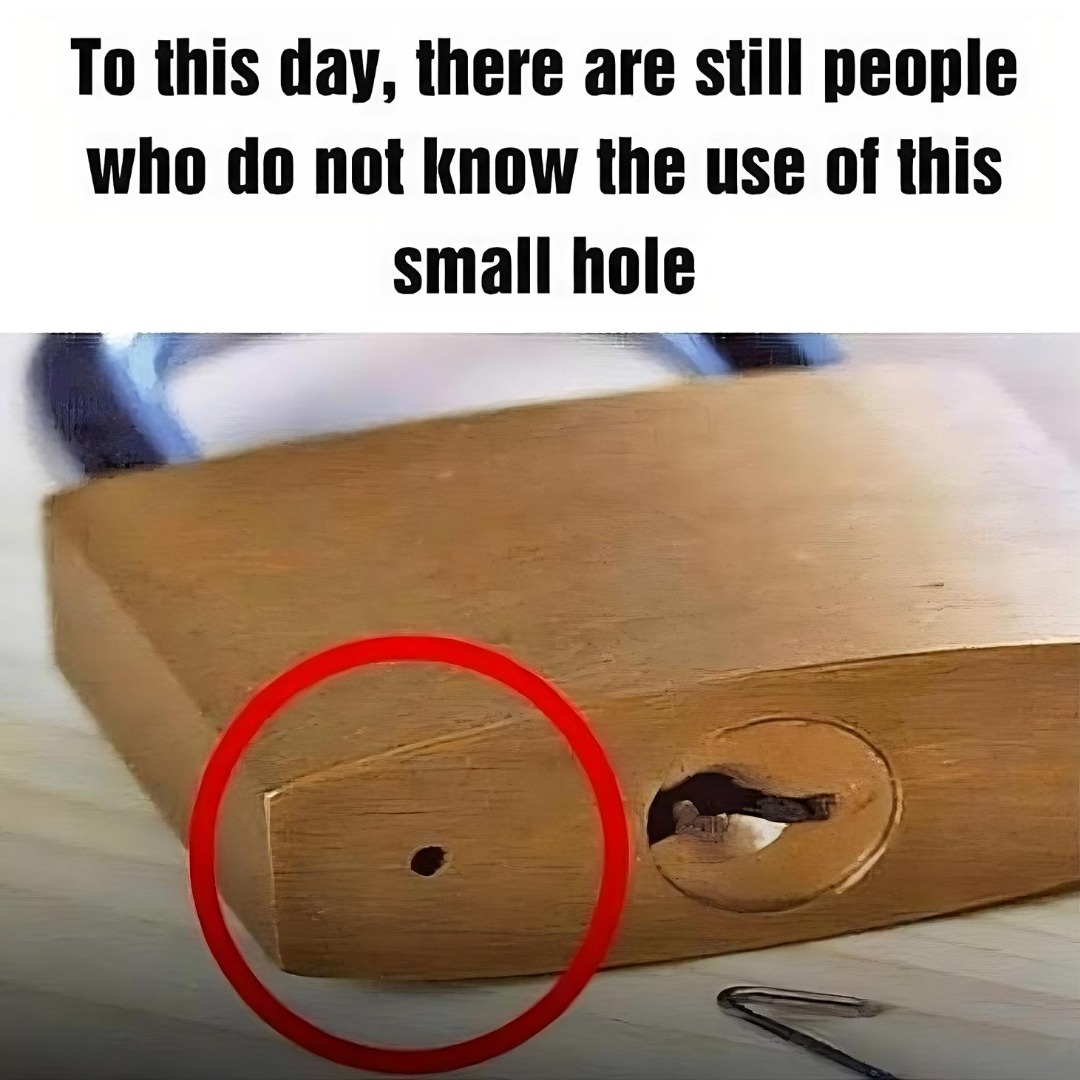Padlocks are a common sight—protecting gates, securing bikes, and keeping toolboxes locked up. Though they may seem like simple devices, padlocks actually have some clever features designed to ensure they last longer and work more effectively. One of these often-overlooked features is the small hole located at the bottom of many padlocks. Though tiny, this hole plays a significant role in extending the life of the padlock and ensuring it continues to function smoothly. Let’s explore why this little hole is so important and discover other objects that also come with hidden, practical features.

The Critical Role of the Padlock Hole
One of the most distinctive parts of a padlock is the small hole at the bottom. While it may seem unimportant, this hole has a couple of essential functions that help maintain the lock’s durability and efficiency.
1. Protecting Against Rust and Corrosion
Padlocks are often used outdoors, meaning they are exposed to the elements—rain, snow, and moisture can all lead to corrosion over time. When water enters a padlock and stays inside, it increases the risk of rust, which can damage the lock’s internal components. The small hole at the bottom of the lock acts as a drainage system, allowing any trapped water to escape. By preventing moisture buildup, the hole helps preserve the lock’s metal parts and prevents rust from forming, ensuring the padlock lasts longer.
2. Lubricating Stuck Mechanisms
Another important use for this small hole is as an entry point for lubrication. Over time, padlocks can get stiff or even stuck, especially after being exposed to harsh conditions. By applying a lubricant like WD-40 through the hole, you can free up the internal mechanisms, making it easier to turn the key or open the lock. This simple trick can prevent the frustration of dealing with a jammed lock and keep it functioning smoothly.
Evolving Padlock Designs
While the drainage hole is a clever feature of traditional padlocks, newer designs have continued to improve upon the technology. Many padlocks today are waterproof or weather-resistant, using materials and coatings that protect against moisture entirely. If you frequently need to lock up items outdoors or in harsh conditions, investing in a waterproof padlock could be a worthwhile upgrade.
Surprising Hidden Features in Everyday Objects
Padlocks aren’t the only objects that contain hidden design elements. Many everyday items include unexpected features that add to their functionality, even though most people might not notice them at first glance. Here are a few surprising examples:
1. Screwdrivers with Built-in Wrench Functionality
Did you know that many screwdrivers are designed to fit into a wrench for extra torque? The hexagonal shape at the base of the handle allows the screwdriver to be turned with a wrench, providing more power for loosening or tightening stubborn screws. This feature is especially useful for mechanics or DIY enthusiasts working in tight spaces.
2. Fabric Swatches on New Clothes
When you buy new clothing, you may notice a small fabric swatch included with the garment. These swatches serve multiple purposes, from allowing you to test different detergents to finding an exact color match for repairs. They’re a handy little addition for maintaining your clothes over time.
3. Brass Doorknobs and Hygiene
Brass doorknobs aren’t just durable—they also have natural antimicrobial properties. Brass can kill bacteria over time, making it a hygienic choice for frequently touched items like doorknobs, railings, and yes, even padlocks. It’s a small but meaningful way to help reduce the spread of germs in public spaces.
4. The Gas Gauge Arrow in Your Car
Ever find yourself at the gas station, unsure of which side your fuel tank is on? Most cars have a small arrow next to the gas gauge on the dashboard that points to the correct side. It’s a simple but helpful feature that can save you time and frustration, especially when driving an unfamiliar vehicle.
5. Heinz Ketchup’s “57” Label
Struggling to get ketchup out of the bottle? There’s a trick for that. The “57” label on Heinz ketchup bottles isn’t just for branding—it’s the perfect spot to tap when you’re trying to get the ketchup flowing. This small design detail helps you enjoy your meal without the hassle of endless shaking.
Why Hidden Features Matter
These hidden features in everyday objects aren’t just for show—they solve common problems and add real value. The thoughtful design behind these features helps us use products more effectively and conveniently. Understanding these details allows us to appreciate the effort that goes into even the simplest tools.
Conclusion: Discovering the Thoughtful Design Behind Common Objects
Padlocks may seem like straightforward devices, but the small hole at the bottom reveals the attention to detail in their design. This tiny feature protects against rust and allows for easy maintenance, making padlocks more durable and reliable. Similarly, other objects—like screwdrivers, brass doorknobs, and ketchup bottles—contain hidden elements that make our lives easier. By recognizing these thoughtful designs, we can gain a deeper appreciation for the everyday items we often take for granted.





